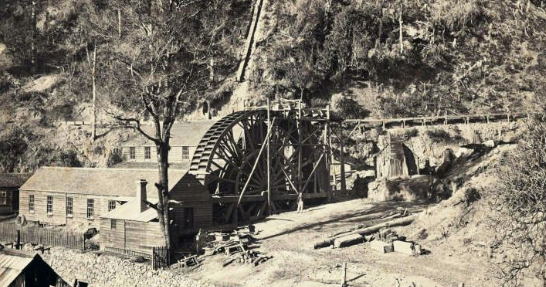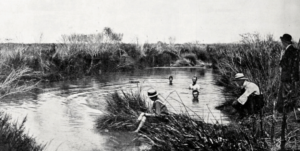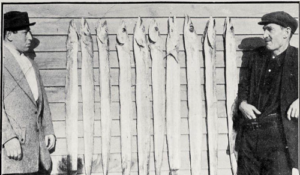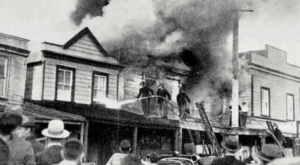As part of a Valley Profile series, MEGHAN HAWKES searches through old newspapers to bring you the stories Thames Valley locals once read about themselves.
1873
During a severe storm over Tararu a centuries-old kauri tree which had been growing on the ranges was overturned by the force of the gale and a quartz lode, some 4ft in thickness, was partially uncovered.
A few days later a party of miners chanced to be passing the spot when they observed nodules of quartz among the upturned roots of the ancient forest giant.
After some fossicking they discovered a gold bearing lode and at once marked off claims.
A lode was opened up and a quantity of quartz was sent to a battery to be crushed. If the crushing proved payable, there was no doubt this windfall would be the means of reviving mining operations, especially in the Tararu district.
The timely discovery induced those miners not profitably employed to spread themselves over the ranges where many windfalls might be discovered as well as adding to the general prosperity of the Province.
Meanwhile, unrest amongst local Māori caused the proprietors of Austin’s Hotel at Paeroa great alarm. Sometime towards midnight the report of a gun was heard, and it was found that the shot had been fired near the hotel.
They got up and armed themselves, but no one was to be found about.
Meetings between Europeans and Māori were being constantly held and Te Moananui had said he would be the first to spill blood in Ohinemuri.
Mr Mitchell, who also had a hotel at Paeroa, deserted it as it was not safe to remain there any longer.

He packed up goods and chattels and made his way to Shortland.
He was the bearer of anything but reassuring news, bringing word of a possible night attack on the Thames goldfield.
As soon as he arrived, Mr Mitchell advised Captain Fraser of what he knew; and, although such an attack was regarded as improbable, Captain Fraser deemed it to be his duty to transmit the intelligence to the government in Wellington.
Also in 1873, a large portion of the land at Pukorokoro Miranda owned by the New Zealand Coal Company was good agricultural land and it was their intention to set apart some 6000 acres or so for small farms on easy terms in order to encourage settlement.
The company was to work the coal seams in the Wharekawa Valley, lying between the Miranda and Surrey redoubts.
Not only were the coal seams to be opened but a railroad was to be laid down from the pits to connect with the Auckland and Waikato Railway on the one side and on the other side with Pukorokoro Creek.
The creek was navigable for ordinary-sized vessels, and provided an easy way of conveying the coal to Grahamstown, Coromandel and many of the other mining districts on the seaboard.
A township was to be laid out at the mines, extensive plant was on its way from London, and a screw collier had been built for conveying the coal from Pukorokoro to Grahamstown.
The seam was 10ft thick and was believed to extend under nearly the whole of the company’s property. Ironstone, timber, limestone and flax were also all found on the land in great abundance.




